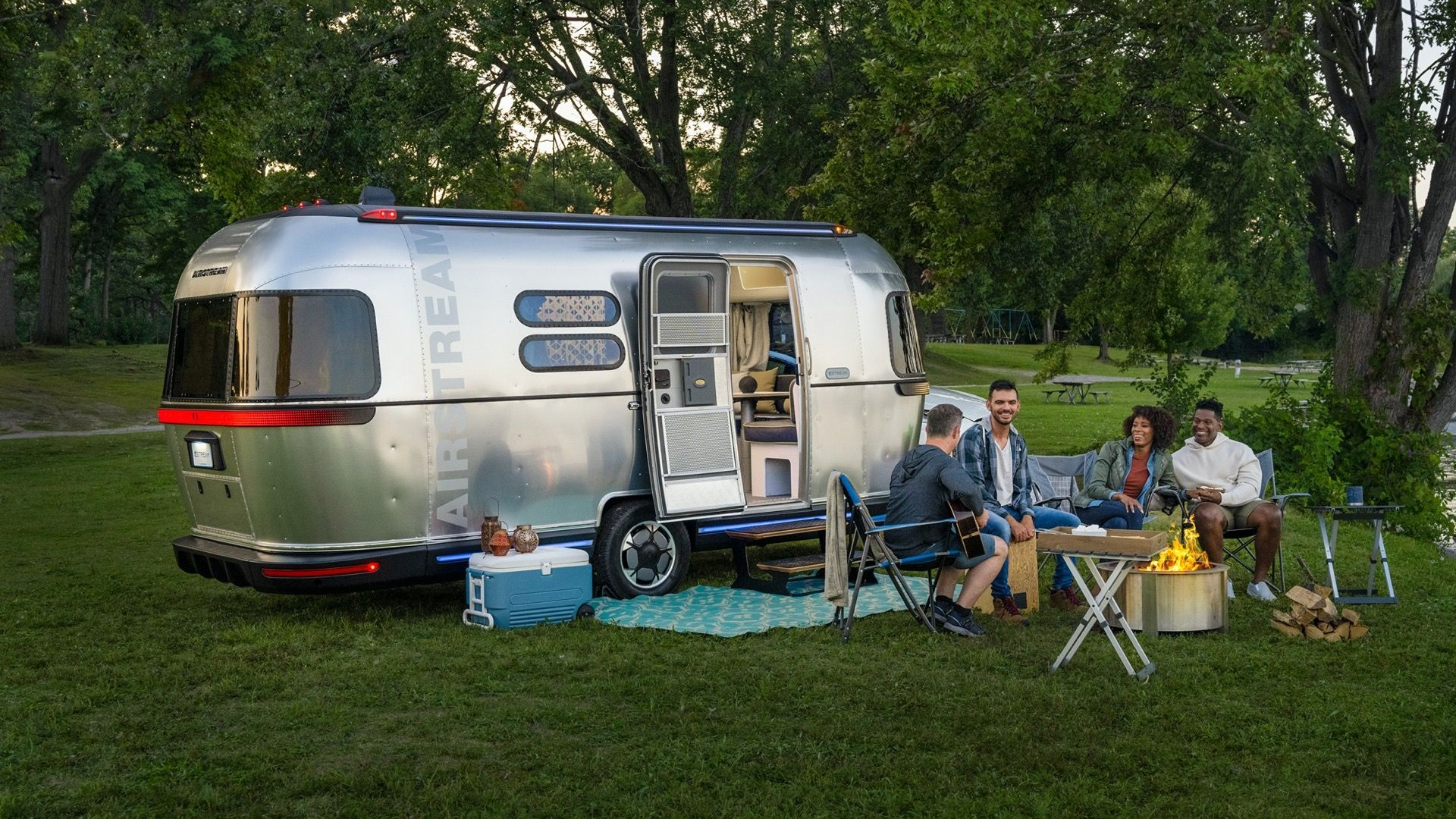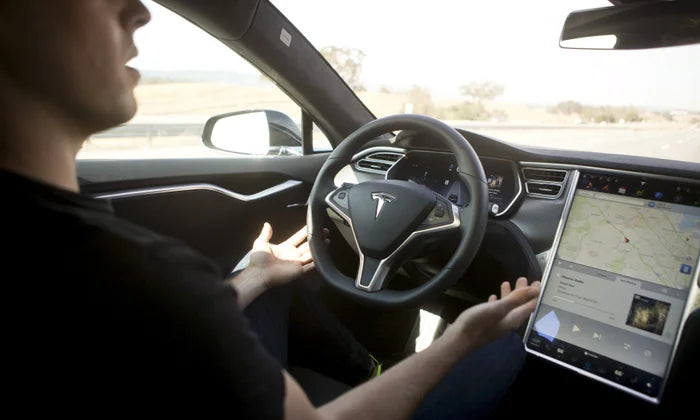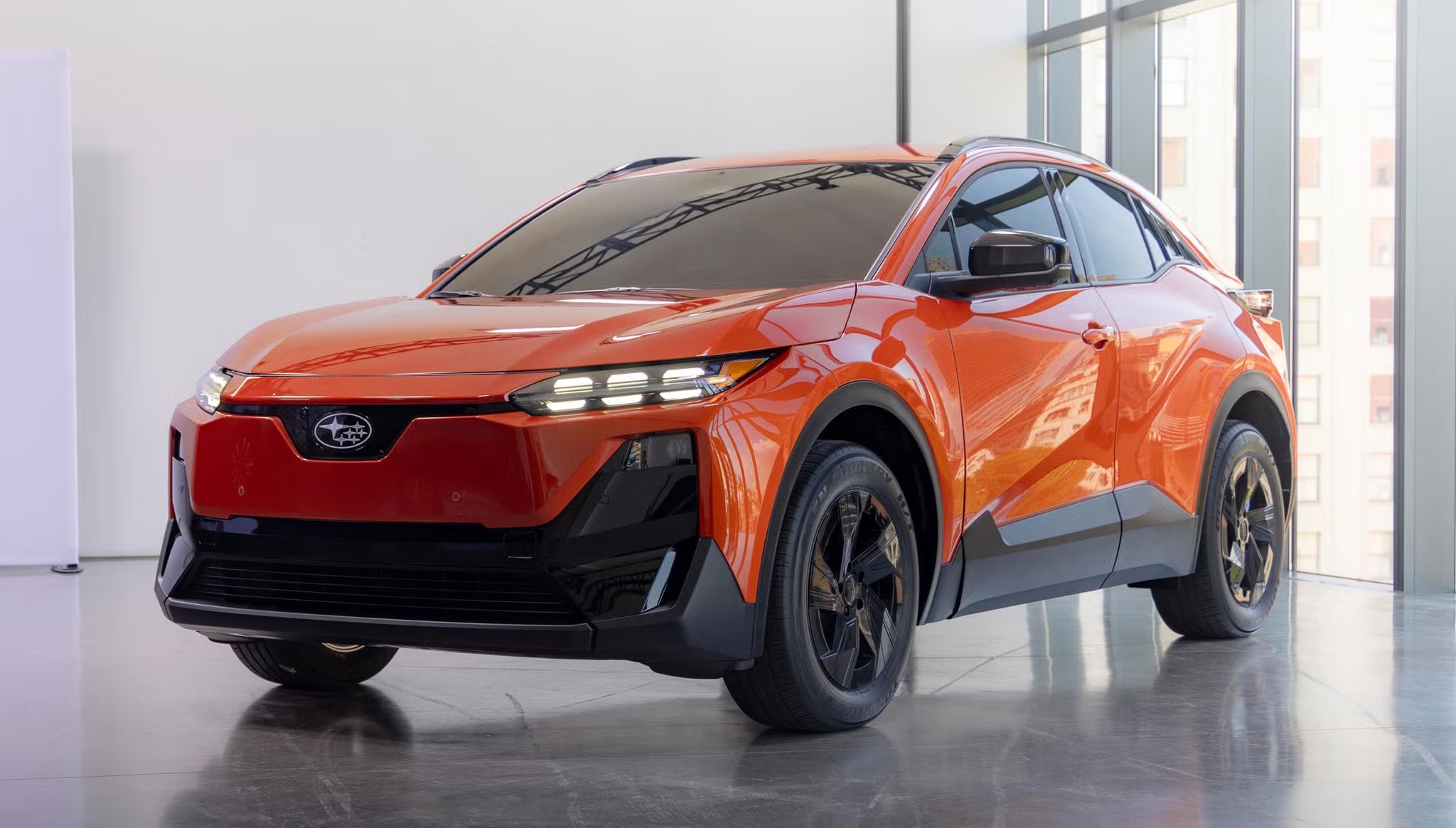Der Aufstieg der Elektrofahrzeuge (EVs) hat eine neue Ära für Outdoor-Fans eingeläutet, insbesondere für Wohnmobil-Camping-Fans. Dank des bidirektionalen Ladens – einer Technologie, die es Elektrofahrzeugen ermöglicht, sowohl Strom zu beziehen als auch zu liefern – können Camper nun die Batterie ihres Fahrzeugs für den Betrieb ihres Wohnmobils nutzen und so das Campingerlebnis revolutionieren. Dieser Artikel erläutert die Funktionsweise des bidirektionalen Ladens, seine Vorteile für Wohnmobil-Camping, die erforderliche Infrastruktur (einschließlich tragbarer Ladegeräte und NEMA-kompatibler Systeme) und gibt praktische Tipps für ein reibungsloses, netzunabhängiges Abenteuer.
Bidirektionales Laden verstehen: Die Grundlagen
Bidirektionales Laden, auch bekannt als Vehicle-to-Load (V2L) oder Vehicle-to-Grid (V2G) , ermöglicht es einem Elektrofahrzeug, als Stromquelle für externe Geräte, wie z. B. ein Wohnmobil, zu fungieren. Im Gegensatz zum herkömmlichen Laden, bei dem Strom nur vom Netz zum Fahrzeug fließt, ermöglicht das bidirektionale Laden, dass die Batterie des Elektrofahrzeugs Energie an andere Systeme abgibt. Möglich wird dies durch integrierte Wechselrichter, die den Gleichstrom der Batterie in Wechselstrom (typischerweise 120 V oder 240 V) umwandeln, der für Wohnmobilgeräte geeignet ist.
Der Ford F-150 Lightning beispielsweise bietet über seine Bordsteckdosen eine Ausgangsleistung von bis zu 9,6 kW – genug, um die Beleuchtung, den Kühlschrank und sogar die Klimaanlage eines Wohnmobils stundenlang zu betreiben. Ein Bericht des Electric Power Research Institute (EPRI) aus dem Jahr 2024 schätzt, dass eine 100-kWh-Elektrofahrzeugbatterie je nach Nutzung die Grundbedürfnisse eines Wohnmobils zwei bis drei Tage lang ohne Aufladen decken kann. Allerdings unterstützen nicht alle Elektrofahrzeuge das bidirektionale Laden – Modelle wie der Hyundai Ioniq 5 , der Kia EV6 und der Tesla Cybertruck (mit Adapter) gehören zu den Spitzenreitern in diesem Bereich.

Vorteile des bidirektionalen Ladens beim Wohnmobil-Camping
Die Integration des bidirektionalen Ladens in das Wohnmobil-Camping bietet mehrere Vorteile und macht es zu einem Wendepunkt für Abenteuer abseits des Stromnetzes:
- Energieunabhängigkeit: Dank bidirektionalem Laden können Sie an abgelegenen Orten campen, ohne auf Campingplatzanschlüsse oder laute Generatoren angewiesen zu sein. Ihr Elektrofahrzeug wird zu einem mobilen Kraftwerk, das saubere und leise Energie liefert.
- Kostenersparnis: Beim traditionellen Camping mit dem Wohnmobil fallen oft Treibstoffkosten für Generatoren oder Gebühren für Stromanschlüsse an. Durch das bidirektionale Laden entfallen diese Kosten, da Sie die Batterie Ihres Elektrofahrzeugs nutzen, die zu Hause über eine NEMA 14-50-Steckdose oder unterwegs mit einem tragbaren Ladegerät aufgeladen werden kann.
- Umweltbelastung: Generatoren stoßen Kohlendioxid und Lärm aus und stören so die Ruhe der Natur. Bidirektionales Laden nutzt die emissionsfreie Batterie Ihres Elektrofahrzeugs und entspricht dem umweltbewussten Ethos vieler Camper.
- Vielseitigkeit: Neben der Stromversorgung Ihres Wohnmobils können durch das bidirektionale Laden auch andere Geräte wie tragbare Grills, Laptops oder sogar medizinische Geräte betrieben werden, was Ihr Campingerlebnis verbessert.
Eine Umfrage der RV Industry Association aus dem Jahr 2023 ergab, dass 68 % der Wohnmobilbesitzer daran interessiert sind, die Elektrofahrzeugtechnologie fürs Camping einzusetzen, wobei das bidirektionale Laden als Hauptmotivator genannt wird.

Infrastrukturanforderungen: Erfolgreiche Einrichtung
Um Ihr Wohnmobil mit bidirektionalem Laden zu betreiben, benötigen Sie die richtige Ausrüstung und Einrichtung:
- Kompatibles Elektrofahrzeug: Stellen Sie sicher, dass Ihr Elektrofahrzeug bidirektionales Laden unterstützt. Informationen zur V2L-Fähigkeit und zur maximalen Leistungsabgabe (z. B. 3,6 kW für den Ioniq 5, 9,6 kW für den F-150 Lightning) finden Sie in der Bedienungsanleitung.
- Ladekabel und Adapter: Die meisten Elektrofahrzeuge mit V2L-Funktionalität werden mit einem proprietären Adapter geliefert, der Wechselstrom ausgibt. Der Kia EV6 verfügt beispielsweise über einen V2L-Adapter mit einer Standardsteckdose mit 120 V. Möglicherweise benötigen Sie ein zusätzliches Kabel für den Anschluss an die 30-Ampere- oder 50-Ampere-Steckdose Ihres Wohnmobils.
- NEMA-konformes Laden: Wenn Sie Ihr Elektrofahrzeug auf dem Campingplatz aufladen müssen, ist ein tragbares Ladegerät mit einer NEMA 14-50-Steckdose (üblich auf Wohnmobilparks) unerlässlich. Diese Steckdosen liefern 240 V und bis zu 50 Ampere und ermöglichen so ein schnelleres Laden, um die Batterie Ihres Elektrofahrzeugs nach dem Aufladen des Wohnmobils wieder aufzuladen.
- Energiemanagement: Wohnmobile benötigen für grundlegende Geräte typischerweise 3–5 kW. Verwenden Sie ein Energiemanagementsystem, um den Verbrauch zu überwachen und eine Überlastung der Batterie zu vermeiden. Einige Elektrofahrzeuge, wie der Tesla Cybertruck, verfügen über integrierte Software, um die Entladung zu begrenzen und ausreichend Reichweite für die Fahrt zu erhalten.

Praktische Tipps zur Verwendung des bidirektionalen Ladens beim Wohnmobil-Camping
Um das bidirektionale Laden beim Camping optimal zu nutzen, befolgen Sie diese bewährten Vorgehensweisen:
- Batteriestand überwachen: Bei den meisten Elektrofahrzeugen mit V2L-Funktion können Sie einen Mindestladestand (z. B. 20 %) festlegen, um sicherzustellen, dass Sie genügend Reichweite haben, um bis zur nächsten Ladestation zu fahren. Nutzen Sie die App Ihres Elektrofahrzeugs, um den Verbrauch in Echtzeit zu verfolgen.
- Setzen Sie auf energieeffiziente Geräte: Entscheiden Sie sich für LED-Leuchten, stromsparende Ventilatoren und energieeffiziente Kühlschränke in Ihrem Wohnmobil, um den Stromverbrauch zu minimieren. Beispielsweise verbraucht eine LED-Leuchte nur 10 Watt im Vergleich zu 60 Watt bei einer Glühbirne, was bei einem Wochenendausflug deutlich Energie spart.
- Ladestopps einplanen: Wenn Sie in einer abgelegenen Gegend campen, suchen Sie nach nahegelegenen Ladestationen oder Campingplätzen mit NEMA-kompatiblen Steckdosen. Ein tragbares Ladegerät mit einstellbarer Stromstärke (z. B. 16 A bis 32 A) bietet Flexibilität für verschiedene Stromquellen.
- Konditionieren Sie die Batterie: Wenn Sie bei kaltem Wetter campen, konditionieren Sie die Batterie Ihres Elektrofahrzeugs, bevor Sie sie in das Wohnmobil entladen. Eine warme Batterie (ca. 20–25 °C) entlädt sich effizienter und erhält so die Kapazität.

Herausforderungen und Lösungen beim bidirektionalen Laden für Wohnmobil-Camping
Obwohl das bidirektionale Laden ein enormes Potenzial bietet, bringt es auch Herausforderungen mit sich:
- Risiko einer Batterieentladung: Durch die Stromversorgung eines Wohnmobils kann die Batterie Ihres Elektrofahrzeugs schnell entladen werden, insbesondere wenn Sie Geräte mit hohem Stromverbrauch wie eine Klimaanlage betreiben.
- Lösung: Verwenden Sie einen Stromzähler, um den Verbrauch zu verfolgen und die Nutzung von Geräten mit hohem Stromverbrauch auf kurze Zeiträume zu beschränken.
- Eingeschränkte Kompatibilität: Nicht alle Elektrofahrzeuge unterstützen bidirektionales Laden und einige Wohnmobile benötigen möglicherweise Adapter für 50-Ampere-Systeme.
- Lösung: Informieren Sie sich über die V2L-Fähigkeiten Ihres Elektrofahrzeugs und investieren Sie in einen Universaladapter, der mit dem Einlass Ihres Wohnmobils kompatibel ist.
- Ladeinfrastruktur: Auf abgelegenen Campingplätzen besteht möglicherweise kein Zugang zu NEMA-Steckdosen zum Aufladen.
- Lösung: Nehmen Sie ein hochwertiges tragbares Ladegerät mit, das wetterfest ist (Schutzart IP67), und stellen Sie sicher, dass es für mehr Vielseitigkeit sowohl mit NEMA 14-50- als auch mit 6-50-Steckdosen kompatibel ist.
Eine Studie des National Renewable Energy Laboratory (NREL) aus dem Jahr 2024 ergab, dass 85 % der Nutzer bidirektionaler Ladegeräte von verbesserten Campingerlebnissen berichteten, 30 % jedoch das Batteriemanagement als Lernkurve bezeichneten.

Die Zukunft des EV-Campings mit bidirektionalem Laden
Mit der Weiterentwicklung der Elektrofahrzeugtechnologie wird das bidirektionale Laden zur Standardfunktion und revolutioniert das Wohnmobil-Camping weiter. Hersteller entwickeln Elektrofahrzeuge mit größeren Batterien (z. B. dem 200-kWh-Akku des GMC Hummer EV) und höherer Leistung, die Wohnmobile über längere Zeiträume mit Strom versorgen können. Darüber hinaus erleichtern Innovationen bei tragbaren Ladegeräten und einer NEMA-kompatiblen Infrastruktur das Aufladen unterwegs und ermöglichen Campern ein sorgenfreies Leben ohne Netzanschluss.
Auch Regierungen fördern diesen Trend. In den USA bietet der Inflation Reduction Act von 2022 Steuergutschriften für Besitzer von Elektrofahrzeugen, die bidirektionales Laden zur Energiespeicherung nutzen, wodurch die Kosten für Adapter oder tragbare Ladegeräte ausgeglichen werden können. Analysten prognostizieren, dass bis 2030 50 % der neuen Elektrofahrzeuge V2L unterstützen werden, wodurch Camping mit Elektrofahrzeugen im Wohnmobil zugänglicher denn je wird.

Fazit: Machen Sie mit bei der EV-Camping-Revolution
Bidirektionales Laden revolutioniert das Wohnmobil-Camping und bietet Energieunabhängigkeit, Kosteneinsparungen und eine umweltfreundlichere Art, die Natur zu erkunden. Nutzen Sie die Batterie Ihres Elektrofahrzeugs zur Stromversorgung Ihres Wohnmobils, kombiniert mit Zubehör wie einem tragbaren Ladegerät und NEMA-kompatiblen Steckdosen, und genießen Sie Abenteuer abseits des Stromnetzes, ohne auf Komfort verzichten zu müssen. Mit der zunehmenden Verbreitung dieser Technologie wird die Revolution des Campings mit Elektrofahrzeugen weiter voranschreiten und mehr Campern ermöglichen, nachhaltig unterwegs zu sein. Entdecken Sie noch heute das bidirektionale Laden und gestalten Sie Ihren nächsten Wohnmobil-Trip mit der Leistung Ihres Elektrofahrzeugs neu.








Aktie:
ICCU-Ausfälle bei Elektrofahrzeugen: Was Besitzer wissen müssen
Vergleich der Ladekosten für Elektrofahrzeuge und Benzin: Ein Bericht aus der Praxis eines Haushalts mit zwei Elektrofahrzeugen